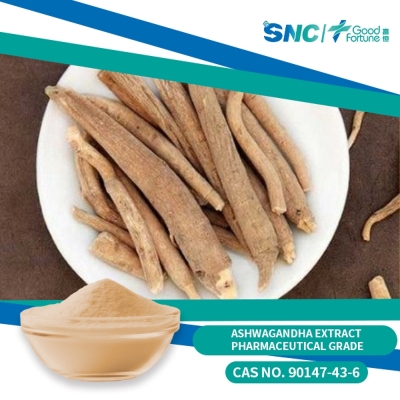-
Categories
-
Pharmaceutical Intermediates
-
Active Pharmaceutical Ingredients
-
Food Additives
- Industrial Coatings
- Agrochemicals
- Dyes and Pigments
- Surfactant
- Flavors and Fragrances
- Chemical Reagents
- Catalyst and Auxiliary
- Natural Products
- Inorganic Chemistry
-
Organic Chemistry
-
Biochemical Engineering
- Analytical Chemistry
- Cosmetic Ingredient
-
Pharmaceutical Intermediates
Promotion
ECHEMI Mall
Wholesale
Weekly Price
Exhibition
News
-
Trade Service
Spinal cord injury often leads to disability and seriously endangers the quality of life.
the past few decades of spinal cord injury research has made significant progress in axon regeneration, most interventions have not yet been translated into effective clinical therapies.
difficulty in treating spinal cord injury is the death of many neurons, resulting in permanent loss of nerve function.
led by Professor Chen Gong of Jinan University in Guangzhou, China, at Front. Cell Dev. Biol. The journal published a research paper entitled: Regeneration of Functional Neurons After Spinal Cord Injury via in situ NeuroD1-Mediated Astrocyte-to-Neuron Conversion.
the study reported on a new gene therapy that uses endogenetic glial cells in the spinal cord to regenerate functional new neurons, giving new hope to thousands of spinal cord injury patients around the world.
Traditional spinal cord injury treatment strategies focus primarily on promoting axon regeneration of residual neurons or transplanting external stem cells to intervene, while Professor Chen gong and his team use endogenetic assosteroid glial cells in the injured spinal cord to convert them directly into functional new neurons.
In recent years, Chen has published a series of articles demonstrating that new neuroregenetic gene therapies based on neurorefragment factor NeuroD1 or NeuroD1-Dlx2 have significant healing effects in isohemic stroke and Huntington's disease mouse models.
they further converted stroke-induced stress-induced star glial cells directly into neurons in the brains of primate rhesus monkeys, laying the groundwork for future clinical trials.
work is the first time Professor Chen Gong's team has extended their neuro-in-place regeneration technology from the brain to the spinal cord.
they first successfully converted NeuroD1 into neurons by using retrovirus to express it in a split stress star glial cell created by spinal cord injury.
the advantage of retrovirus is that they only express targeted genes in divided cells.
because neurons are irresistible, the use of retrovirus eliminates the possibility of the original neuron expressing NeuroD1.
After proving that spinal glial cells can be converted into neurons in place, in order to further improve the efficiency of neuroregeneration and pave the way for future conversion applications, Chen Gong's team also used adeno-related viruses (AAVs) to convert star-shaped glial cells in the spinal cord into neurons.
AAV virus is a common carrier of gene therapy because of its relatively low immunogenicity and high efficiency of infection in various tissues, including nerve tissue.
Interestingly, Chen's team found that neurons converted by NeuroD1 alone were primarily excitable glutamate-energy neurons, and that the addition of another transcription factor, Dlx2, significantly increased the proportion of inhibitory GABA energy neurons.
this is consistent with the results of transdifferentiation in the brain, showing that different combinations of transcription factors can be used to control the transformed neuron subsype and its proportions, so as to carry out nerve regeneration and repair with precision.
Chen Gong team also found that micro-environments have an important influence on the decision of the neurodegeneral fate after transformation.
they designed a head-to-head side-by-side comparison experiment that injected the same AAV NeuroD1 vector into the cerebral cortical or spinal cord of mice.
A month later, they found that neurons transformed from asexual glial cells in the cerebral cortical layer showed characteristic markers of neurons in the cerebral cortical layer, but did not show signs of neurons in the spinal cord;
suggests that the microenvironment of the cerebral cortical and spinal cord, as well as the glial cell line in the microenvironment, may play an important role in shaping the fate of the transformed neurons.
Chen Gong team further studied the important issue of the time window for the transformation of astrological glial cells into neurons after spinal cord injury.
they compared the conversion efficiency of stress-star glial cells 10 days after spinal cord injury and 4 months after injury.
found that NeuroD1 was able to efficiently convert astrological glial cells into neurons, not only in short-term damage, but also after long-term damage.
The study opens a new door to the treatment of spinal cord injuries: by converting endogenetic asastotic glial cells of the spinal cord directly into functional neurons, this new neuroregeneration technique could be developed as a new treatment for spinal cord injuries and the restoration of nerve function.
In addition to Professor Chen Gong, the spinal cord restoration contributors include Brendan Puls, Ding Yan, Zhang Fengyu, Pan Mengxuan, Lei Zhufan, Yu Zifei, Jiang Mei, Bai Yuxuan, Cody Forsyth, Morgan Metzger, Tanvi Rana, Zhang Lei, Ding Xiaoxuan, Matthew Keefe, Alice Cai, Austin Redilla, Michael Lai, Kevin He, Li Hedong.
work was largely funded by the Charles H. Smith Endowment Fund.
Bio Bioworld Source: BioWorld Copyright Notice: All text, images and audio and video materials on this website that indicate "Source: Mets Medicine" or "Source: MedSci Original" are owned by Mets Medicine and are not authorized to be reproduced by any media, website or individual, and are authorized to be reproduced with the words "Source: Mets Medicine".
all reprinted articles on this website are for the purpose of transmitting more information and clearly indicate the source and author, and media or individuals who do not wish to be reproduced may contact us and we will delete them immediately.
at the same time reproduced content does not represent the position of this site.
leave a message here







